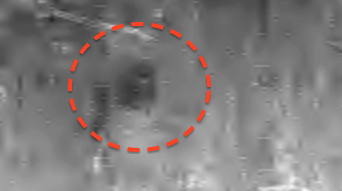


Lunar Orbiter Photographic Atlas of the Near Side of the Moon, By Charles Byrne In 1967, Lunar Orbiter Mission 4 sent back to Earth a superb series of photographs of the surface of the Moon, despite severe degradation caused by scanning artifacts and the reconstruction processes involved in transmission from lunar orbit. Geological Survey maintains the Gazetteer of Planetary Nomenclature on behalf of the IAU with funding from the National Aeronautics and Space Administration (NASA). The lunar maps on this web site are based on the information contained in the Gazetteer of Planetary Nomenclature, which is a dynamic listing of IAU-approved planetary surface feature names. The International Astronomical Union (IAU) is the internationally recognized authority for assigning nomenclature to planetary surface features. The lunar maps presented here have two purposes: (1) to bring together the wealth of information on the locations of named features on the Moon into a single source and (2) to keep this source current so users have access to the most recent changes in lunar nomenclature.

However, none of these sources provides an up-to-date and comprehensive picture of lunar nomenclature. Some maps were created for lunar astronomical observers, some feature a specific type of image, and others concentrate on global coverage or a particular region of the Moon. Questions about these workshops should be directed to are many excellent maps and atlases of the Moon in print and online, with each addressing a particular objective or community. For more information and to register for the workshops, visit. Applications for other workshops are due at a later date. 1-5, 2011 - Arizona State University, Tempe, Ariz.Īpplications for three workshops are due April 1, 2011. July 25-29, 2011 - John Hopkins University Applied Physics Laboratory, Laurel, Md. June 27-JMcAuliffe-Shepard Discovery Center, Concord, N.H. June 27-JHinds Community College, Utica Campus, Utica, Miss. June 20-24, 2011 - Herrett Center for Arts and Science, Twin Falls, Idaho Workshops will take place in the following locations: Laptops are strongly encouraged for those participating in this workshop. Workshop participants will learn about these and other recent discoveries, reinforce their understanding of lunar science concepts, interact with lunar scientists and engineers, work with real LRO data and learn how to bring these data and information to their students using hands-on activities aligned with local, state and national standards. The Lunar Reconnaissance Orbiter has allowed scientists to measure the coldest known place in the solar system, map the surface of the moon in unprecedented detail and accuracy, find evidence of recent lunar geologic activity, characterize the radiation environment around the moon and its potential effects on future lunar explorers and much, much more! These workshops will focus on lunar science, exploration and how our understanding of the moon is evolving with the new data from current and recent lunar missions. NASA’s Lunar Reconnaissance Orbiter, or LRO, mission is sponsoring a series of workshops for educators of students in grades 6-12.


 0 kommentar(er)
0 kommentar(er)
